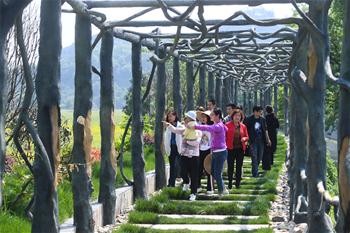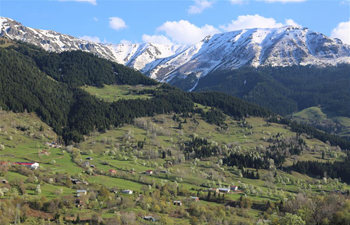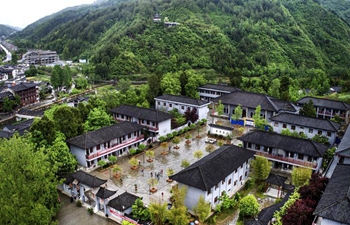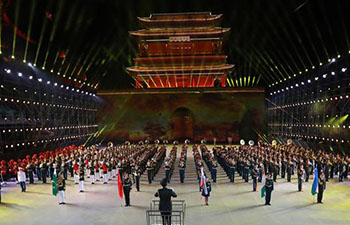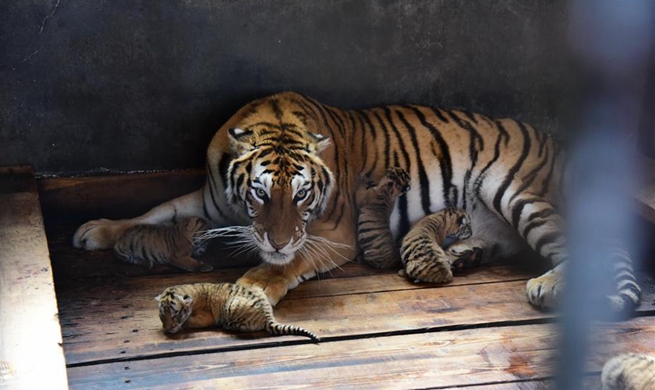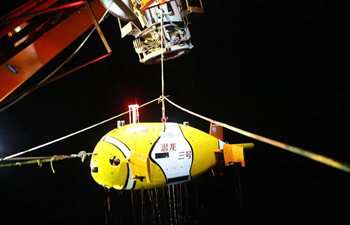WASHINGTON, April 25 (Xinhua) -- An international team of astronomers has witnessed the birth of a colossal cluster of galaxies about 12.4 billion light-years away where a dense concentration of 14 star-bursting galaxies poised to merge.
According to their study published Wednesday in the journal Nature, the light of a tightly bound galactic smashup, known as a protocluster, started traveling to Earth when the universe was only 1.4 billion years old. Its individual galaxies are forming stars as much as 1,000 times faster than our home galaxy and are crammed inside a region of space only about three times the size of the Milky Way.
This ancient megamerger is destined to evolve into one of the most massive structures in the known universe: a cluster of galaxies, gravitationally bound by dark matter and swimming in a sea of hot, ionized gas, according to the researchers.
"Having caught a massive galaxy cluster in throes of formation is spectacular in and of itself," said Scott Chapman, an astrophysicist at Dalhousie University in Halifax, Canada, who specializes in observational cosmology and studies the origins of structure in the universe and the evolution of galaxies.
The new observation using the Atacama Large Millimeter/submillimeter Array (ALMA) and the Atacama Pathfinder Experiment (APEX) revealed that it happened about 1.5 billion years after the Big Bang, or about a tenth of the present age of the universe, half the age than astronomers previously thought these events occurred.
Current theory and computer models suggest that protoclusters as massive as the one observed by ALMA, however, should have taken much longer to evolve.
"The fact that this is happening so early in the history of the universe poses a formidable challenge to our present-day understanding of the way structures form in the universe," Chapman said.
"How this assembly of galaxies got so big so fast is a bit of a mystery, it wasn't built up gradually over billions of years, as astronomers might expect," said Tim Miller, a doctoral candidate at Yale University and co-author on the paper.
"It just hit you in the face because all of a sudden there are all these galaxies there," Chapman said.
In total, the protocluster contains around 10 trillion suns' worth of mass. All that material in such a confined space means that the galaxies will probably merge over time, rather than drift apart.
A numerical simulation projected the 14 galaxies will merge into one giant elliptical galaxy surrounded by a halo of galaxies, stars and dust.
The observed surge of star formation during the protocluster's assembly fits with the composition of modern galaxy clusters, which contain an abundance of old stars of around the same age.
Also, the protocluster is believed to be an excellent test bed for learning more about how present-day clusters formed and evolved.
Modern clusters, for instance, brim with superheated gas that can reach temperatures of more than 1 million degrees. Scientists aren't sure how that gas got there, though.
The high rate of star formation in the newly discovered protocluster may provide a clue: A deluge of newborn stars in a forming cluster may spew hot gas into the voids between the galaxies. That expelled gas is not dense enough to form stars and instead lingers throughout the cluster.




